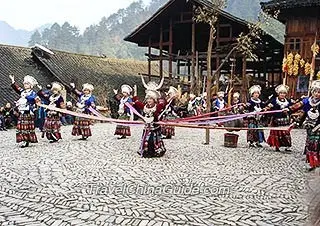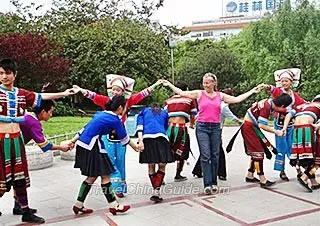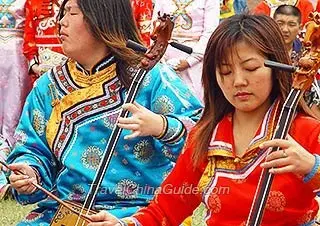Customs of Ethnic Minorities on Mid-Autumn Festival
The ethnic minorities in China celebrate the Mid-Autumn Festival like the Han Chinese. Whilst some offer sacrifices to the moon, appreciate the moon and eat moon cakes, others celebrate the occasion in their own ways.
The Dai nationality is one of the ethnic minorities that make offering to the moon. They include games like pheasants and fish and round glutinous rice cakes. The whole families worship the moon with devotion, after which they enjoy the delicious food and appreciate the bright moon.
|
|
Reputed as “an ethnic minority on horseback”, the Mongolians’ Moon Festival must have something to do with the horse. They ride horses in the moonlight, all the way to the west where the moon sets. It is called “chasing the moon” and they do not stop until the moon is set on the horizon.
The Tibetans celebrate the festival by “seeking” the moon along the river, or more specifically, the moon’s reflection. On the night, young men, women and children try to seek the moon’s reflection around their houses before eating their moon cakes.
The Dong nationalities in Hunan Province have an interesting Mid-Autumn Festival custom called “stealing the moon vegetables.” According to their legend, the goddess from the moon comes to the earth on the night of the Mid-Autumn Day and sprays sweet dews. As these dews are meant for all human beings, everyone thus can share all their vegetables and fruits with sweet dews with anyone. No one will be considered a thief for taking these vegetables or fruits. For single women, they “steal” vegetables or fruits for real love; for married women, the vegetables or fruits can bring them healthy babies; and for single men, they “steal” for happiness.
 |
| Dance of Miao People on Mid-Autumn |
The Miao people play Lusheng (a reed-pipe wind instrument), sing and dance in the moonlight. The singles try to seek their love ones to express their feelings, which is as pure as the moonlight.
The Deang ethnic minority has a Mid-Autumn Festival custom somehow similar to the Miao people. They also play musical instrument, Hulusheng (a gourd-pipe wind instrument). Young women and men also express their love on this particular night. Some even get engaged by sending betel nuts and tea.
Axi people, a branch of the Yi ethnic minority, gather together in an open place and dance the night away. The most exciting part is the love songs that are sang in antiphonal style by young women and men. Even the moon is touched by their expression.
The Oroqen people worship the moon by offering sacrifices and placing a basin of water in front of the offering. The Tu people also has water in a basin but they beat the moon’s reflection. Hence it’s called “Beating the Moon”.
In addition to offer sacrifices to the moon, the Hezhen people also harvest grapes, said to commemorate a smart and hard-working woman who ran to the moon because she could not bear the abuse of her mother-in-law.![]() Further Reading
Further Reading
18 Popular Mid-Autumn Festival Traditions
Customs on Mid-Autumn Festival
Top 6 Mid-Autumn Festival Activities

